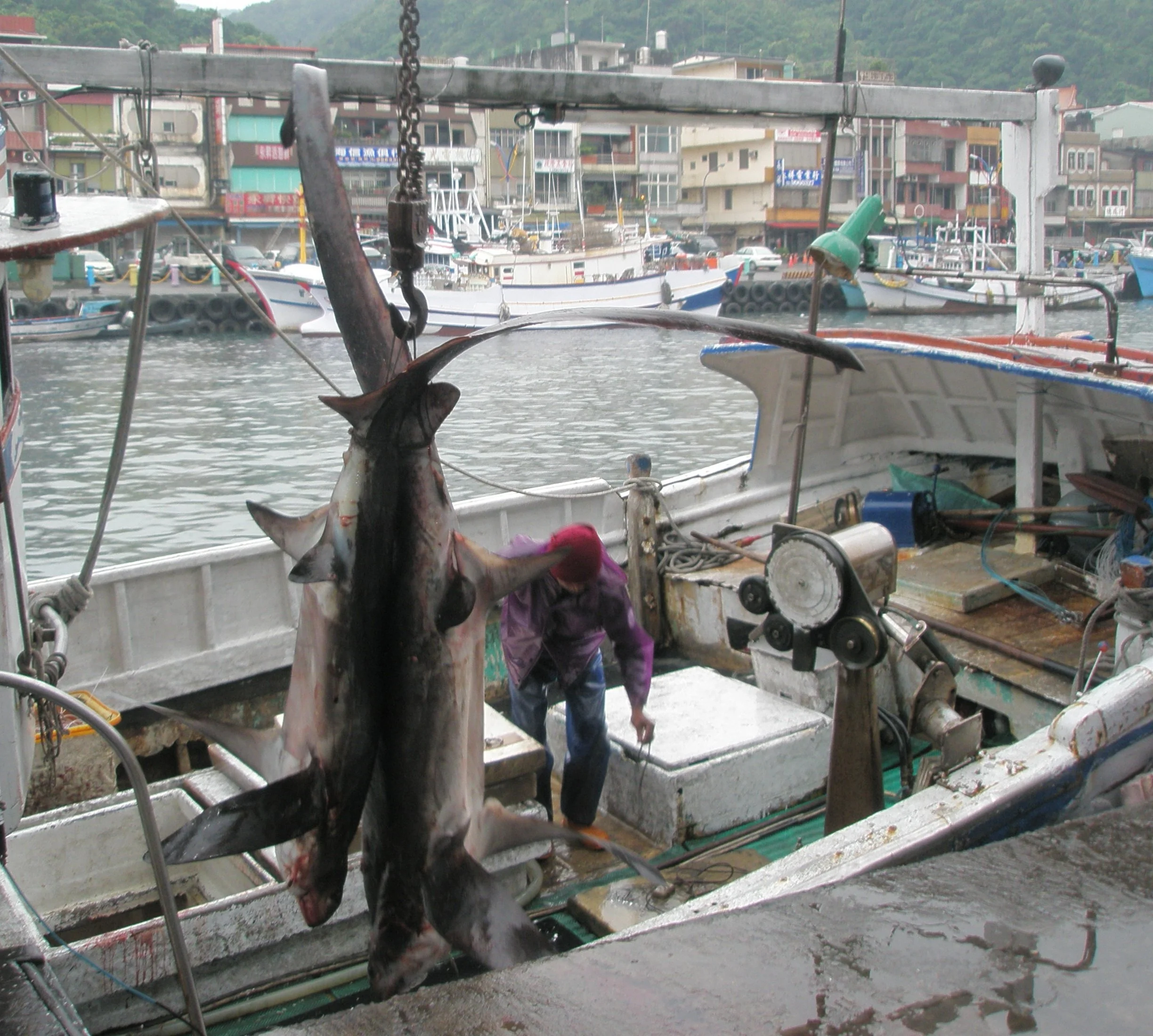Evolutionary History Partially Explains Capture Mortality of Sharks and Rays in Tuna Fisheries
By Eric Gilman, Safina Center Senior Fellow and Milani Chaloupka, Director of Ecological Modelling Services Pty Ltd & Marine Spatial Ecology Lab, University of Queensland
Some approaches to mitigating shark fishing mortality, such as finning bans and handling-and-release methods, are unsuitable for fisheries where sharks are retained and fully utilized. Photo taken in Su’Ao, Taiwan. ©Eric Gilman
Top and middle trophic level predators such as shark and rays are important for maintaining ocean health and are the focus of conservation efforts to mitigate exposure to fishing and other anthropogenic hazards. Depending on a fishery’s management framework and markets, catch composition and practices of individual vessels, sharks and rays may be discarded or retained as either incidental or target catch. There has been increasing concern over the sustainability of shark and ray mortality in open ocean fisheries given their vulnerability to exploitation, ecosystem-level cascading effects from declines in shark and ray abundance, and reduced population fitness from fisheries-induced evolution. There has also been increasing attention to the risks to food, nutrition and livelihood security of coastal fishing communities from declining shark and ray abundance.
Accurate estimates of all sources of mortality are needed for robust assessments of the ecological effects of fishing, including through quantitative stock assessments, population viability models and multispecies ecosystem models. For non-retained catch, a key component of total fishing morality is at-vessel mortality (AVM), which is the proportion of the catch that is dead when fishers retrieve their gear. Because small changes in mortality can result in large changes in mature biomass and therefore population growth, uncertainty in AVM rates is a major impediment to effective management and sustainable fisheries, in particular for sharks and their relatives.
Our project team recently completed assembling a database for 61 shark and ray species and conducted a global meta-synthesis -a quantitative, model-based assessment of all accumulated findings - to estimate AVM rates in a fishing gear type called pelagic longlining, which supplies fresh, frozen and canned seafood products from tunas and other large pelagic or open ocean fishes. A key finding was that evolutionary history (phylogeny) was a significant predictor of AVM – suggesting that related species, with a high degree of shared evolutionary history, may have a high degree of shared traits that explain AVM and are ecologically similar. Thus, adjusting for phylogenetic dependence produces more robust estimates of species-specific AVM rates.
AVM rates ranged from 5% for the pelagic stingray, which is the most common species of ray captured in tuna longline fisheries and categorized as Least Concern by IUCN, to 58% for the pelagic thresher shark, categorized as Endangered by IUCN.
The database of estimated AVM rates supports evidence-informed shark and ray fisheries policy. Measures that reduce catch, and hence AVM levels, such as input controls on fishing effort, output controls such as bycatch quotas and gear technology to increase selectivity are appropriate for species with higher AVM rates. In addition to reducing catchability, handling-and-release practices and interventions such as retention bans in shark sanctuaries and bans on shark finning and international trade hold promise for species with lower AVM rates. However, for shark and ray species with high AVM rates, finning bans and shark sanctuaries that ban shark and ray retention will be less effective at reducing fishing mortality relative to species with low AVM rates.
Building off of these findings, we have recently begun work on a study that will identify opportunities to improve the effectiveness of national implementation of the United Nation’s 1999 International Plan of Action on conserving and managing sharks. We’ll provide information on progress on this new study and share a publication from the AVM study in a subsequent Safina Center blog.

